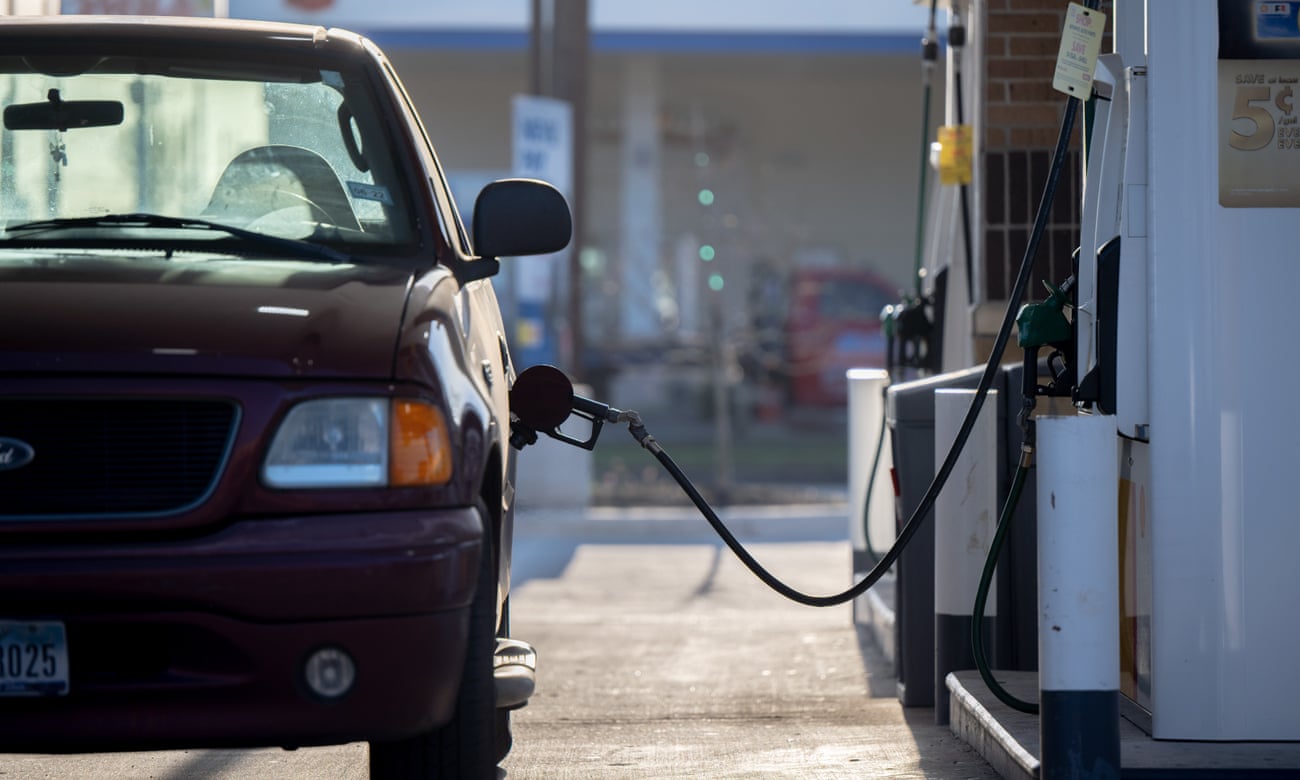
Democratic president Joe Biden appears to be centering his presidency around the idea of rebuilding the middle class through government investment in ordinary Americans. This is a major shift—a sea change—from the past 40 years of Republican policy saying that the economy would prosper if only the government slashed taxes and regulation, leaving more money and power in the hands of business leaders, those “makers” who would invest in new industries and provide more jobs. Watching the effect of his policies is a window into what works and what doesn’t.

Second, the Republicans are counting on anger over inflation, shortages, and gas prices to win control over the House of Representatives and the Senate in the fall elections. It’s worth paying attention to what’s really going on with those issues, as well as to what policies the Democrats and the Republicans are putting on the table to address them.
On the first point: Biden has focused on rebuilding the American middle class that has been so terribly hollowed out in the past 40 years. While he appears to be driven by his belief in the dignity of all Americans and their right to be able to make ends meet with a decent job, historians will tell you that in the U.S., race and gender tensions are significantly lower when income and wealth are more evenly distributed than when a few people at the top of the economic ladder control most of the nation’s capital. The rise of lynching in the U.S. in the late 1880s, just as trusts came to monopolize the economy, was not a coincidence.
The Republican economic promise since Reagan has been that cutting regulation and taxes would create a healthy economy in which everyone who is willing to work can thrive. But political commentator Thom Hartmann marshaled the statistics in a crystal clear Twitter thread a week ago, revealing just how badly that argument has failed.
Hartmann noted that after World War II, “the nation had hummed along for 40 years on a top income tax bracket of 91% and a corporate income tax that topped out around 50%.” Business was growing faster than at any other previous time, and businessmen stayed out of politics. The country had great public schools, research laboratories, trade schools, airports, interstate highways, and small businesses, as well as unions that protected America’s workers.
The election of Ronald Reagan meant radical tax cuts (from a top marginal rate of 74% in 1980 to the 27% it is today), business deregulation, and the gutting of social safety nets. Forty-two years later, Hartmann notes, more than $50 trillion has been transferred from the bottom 90% to the top 1%. In 1980, 60% of us were in the middle class; now fewer than half of us are. Republicans promised that permitting business concentration would lead to innovation and opportunity; instead, we have seen an end to competition, along with price gouging and profiteering from the giant companies that choke out small business. Stock buybacks were supposed to mean that senior executives would care more about the future of their companies, but instead they have become a means for them to pocket cash.
Since the beginning of his term, Biden has tried to take on the concentration of wealth and power among a few elites. Biden’s investment in the U.S. economy through the American Rescue Plan and the bipartisan infrastructure bill has produced significant results. On Friday, the Bureau of Labor Statistics released the nonfarm job numbers for June, which show that employment continues to rise. The economy added 372,000 jobs in June, mostly in “professional and business services, leisure and hospitality, and health care.” We are still 524,000 jobs down from February 2020, before the pandemic. Unemployment remains at 3.6%, with about 5.9 million folks unemployed.
There were some interesting trends in the data. There are 880,000 more jobs in business, computer design, administration, and research than there were in February 2020. There are 260,000 more jobs in outpatient health care now than in February 2020, but hospitals have lost 57,000 workers, and nursing and residential care have lost 379,000. Leisure and hospitality—restaurants, for example—have lost a whopping 1.3 million jobs, or 7.8% of their workers, since February 2020 (although the sector is growing again).
But look at this: transportation and warehousing have grown fast, with 759,000 more jobs than in February 2020. Manufacturing is back to where it was in February 2020, suggesting that President Joe Biden’s emphasis on repairing supply chains is paying off.
And in the past year, wages have gone up 5.1%. That, along with increased pressure for unionization, suggests workers have more power than they did before the pandemic.
This data suggests that people are moving away from work in restaurants, leisure, and nursing—all professions hit terribly hard during the pandemic—and toward transportation and office work. The increase in wages reflects more bargaining power on the part of employees. All of this is hardly rocket science, I know, but it does suggest that the economy is reorganizing at least temporarily into new forms since the pandemic.
This is of interest as we try to figure out what’s going on with inflation, which is currently afflicting not just the U.S. but the rest of the world as well. That story tells us something about the success of the Republican program Hartmann identified.
One of the reasons for inflation has been the concentration of corporate power since the 1980s. A June report by three economists for the Federal Reserve Bank of Boston noted that “[t]he US economy is at least 50 percent more concentrated today than it was in 2005,” and that such concentration amplifies the degree to which companies pass price hikes onto consumers as businesses overcompensate for rising production costs. In the oil industry, the report notes, as prices have spiked, companies have posted jaw-dropping profits.

The price of gasoline has been coming down from its crazy high for the past 25 days. In the past two weeks, the average price of gas has dropped 19 cents a gallon, and as the price of crude oil continues to fall, consumers can expect to see prices continue to fall as well, although they fall more slowly than they rise in a phenomenon researchers call “rocket and feathers.” That term refers to the fact that gas prices go up like a rocket along with the cost of crude oil but fall more slowly as the cost of crude oil comes down, in part because consumers are so happy to see any relief at the pump that they don’t shop around to drive prices lower.
One of the reasons for the crazy highs is speculation by largely unregulated energy traders that creates massive volatility in prices. Lack of regulation is in the news today in another industry, too, as journalists from media organizations including the Guardian, the International Consortium of Investigative Journalists, and the Washington Post revealed how Uber evaded regulators by using a “kill switch” that shut down regulators’ access to the files they needed to monitor the company.
There is a coming showdown between the Democrats’ approach to the economy and the old Republican approach. Biden and the Democrats are trying to pass a $52 billion U.S. Innovation and Competition Act (USICA) that would invest in U.S. science and technology to boost American industry, support research, and fund the manufacture of semiconductor chips to free the U.S. from relying on Chinese products. But Senate minority leader Mitch McConnell (R-KY) has vowed to kill the measure unless the Democrats back off on a budget package that would fund Medicare by placing a 3.8% tax on income “pass throughs” taken by individuals making more than $400,000 a year and would allow Medicare to negotiate drug prices, significantly lowering costs to consumers.